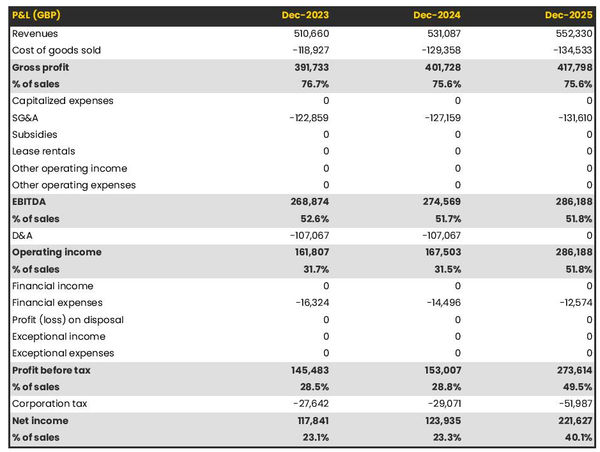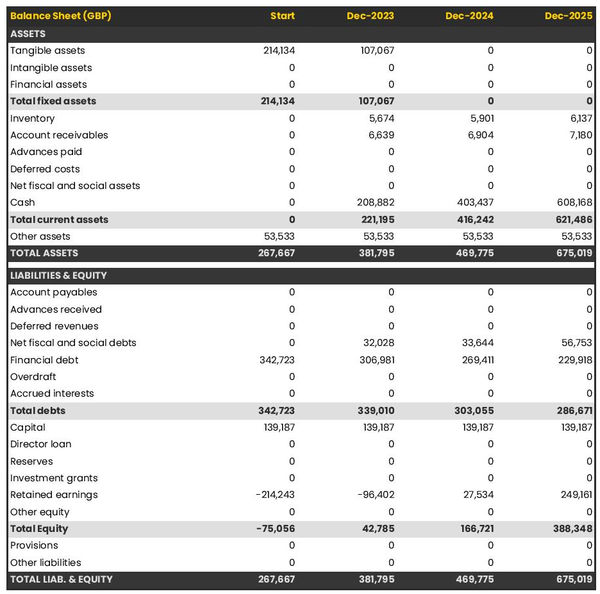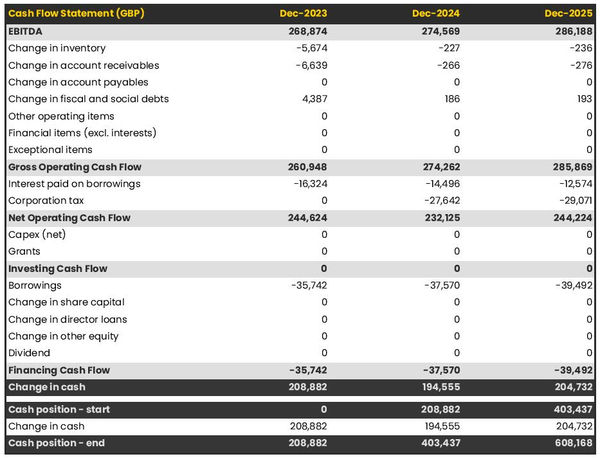How to write a business plan for a car rental company?

Starting or expanding a car rental business is no easy task. It takes careful planning and preparation to ensure that you not only have the resources needed to get your business up and running but also that it will be profitable in the long run. That's where a comprehensive business plan comes into play!
This guide will provide an in-depth look at how to write a business plan for a car rental company, including what information should be included, what tools can help you create your own unique plan, and why having one is so important for success.
Whether you are just starting out or looking to grow your existing car rental company, this guide has all the information you need to make sure your venture succeeds!
Why write a business plan for a car rental company?
Before we dive into the content of the business plan itself, let’s look at some of the main reasons why you may want to write one.
To get a roadmap to grow your car rental business
Writing a business plan for a car rental company forces entrepreneurs to think strategically and set objectives that will help them grow their businesses over the next 3 to 5 years.
This kind of long-term planning is useful for both startups looking to get their foot in the door as well as established companies which have been in operation for some time but are now looking to scale up and expand operations.
A solid business plan can provide valuable insight into where potential opportunities lie, what resources need to be allocated, and how best to manage risks associated with running a car rental service.
By taking the time to develop an effective strategy before launching or expanding operations, entrepreneurs can ensure that they’re making informed decisions about how best to use their available resources.
To get visibility on your car rental company’s cash flows
Regularly comparing the actual financial performance to what was planned in the financial forecast of your car rental’s business plan, enables you to monitor the business’s financial health and adapt as needed.
This enables you to identify potential financial problems (such as an unexpected cash shortfall) before they become too large, and potential growth opportunities (higher demand from a given segment of customers for example), giving you more visibility over the future cash flows of your auto rental business.
This helps you stay on track and ensures that you are making smart decisions about how much money you need or can expect to generate from renting cars.
To support a financing application
A well-structured, comprehensive plan can make all the difference when it comes to securing financial backing from investors or banks.
Writing a business plan is essential when looking for financing from an equity investor, as this will give them the information they need to make an informed decision about investing in your business.
Your business plan should include details of how you intend to grow your car rental company, achieve profitability and generate cash flow.
Investors will want to be sure that their investment will yield good returns, so having a comprehensive and well-thought out business plan is key to securing the necessary funding for your venture.
Similarly, creating a business plan for your car rental company provides lenders with the information they need to assess whether you are able to pay back financing.
Now that we understand why writing a business plan for a car rental company is important, let's take a look at the information you need before starting to write the plan itself.
What information do I need to create a business plan for a car rental company?
Carrying out market research for your car rental company
Carrying out market research is an essential step before writing a business plan for a car rental company.
Market research enables entrepreneurs to gain valuable insights into their target market and understand how best to serve customer needs, allowing them to make informed decisions about pricing strategies, marketing tactics, and other elements of their operations.
It is a key prerequisite because you will need this data to:
- Convince the reader of your car rental business plan that there is an opportunity for you to seize on the local market
- Accurately forecast revenues, as well as sales and marketing expenditures in your financial forecast
Therefore, thorough market research will help ensure that you are creating a realistic financial forecast and setting achievable goals and objectives in your business plan, in addition to increasing the credibility of your document which could lead to greater chances of securing financing from equity investors or banks.
Developing the marketing plan for a car rental company
As we touched on above, developing a sales and marketing plan and budget for your car rental company is essential in order to create an effective business plan.
A well-planned budget should take into account expenditures such as advertising and promotion, which are necessary to reach enough potential customers in order to achieve your sales targets.
The staffing and equipment requirements of a car rental company
Once you have the data to assess how much sales your car rental company can generate, and an idea of what marketing actions will be required to generate these sales. It’s time to think about your investments and recruitment plan as this will help you evaluate your cost structure and create a realistic financial forecast for your car rental company business plan.
When creating the recruitment plan for your car rental company, it is important to consider the number of staff members you need and what roles need to be filled. Consider the hours of operation, the types of customer service you will provide and any special skills that may be needed for certain positions.
Develop a plan with detailed job descriptions outlining the necessary qualifications and capabilities your team members should possess. Estimate the cost of recruitment in terms of wages, bonuses or other benefits you plan on offering to employees. Finally, create a timeline for filling the open roles and decide on the best method of advertising these positions to potential candidates.
When creating your car rental company’s investment plan, try to think about all the assets required for the business to operate:
- The cars themselves will need to be purchased before you can rent them,
- The premises and facilities: where will you park your cars? will you have a pump for customers to fill the tanks at the end of the rental period? what type of office will you require? etc.
- The marketing investments such as your website, brand identity, and uniforms.
- Etc.
Now that you are armed with the information needed to create a business plan for your car rental company, it is time to move on to creating a financial forecast for the same.
What goes in the financial forecast of a car rental company?
The financial forecast of your car rental company will enable you to assess the profitability potential of your business in the coming years and how much capital is required to fund the actions planned in the business plan.
The four key outputs of a financial forecast for a car rental company are:
- The profit and loss (P&L) statement,
- The projected balance sheet,
- The cash flow forecast,
- And the sources and uses table.
Let’s look at each of these in a bit more detail.
The projected P&L statement
The projected P&L statement for a car rental company shows how much profit the company is expecting to make and how much it will grow in future years.

The projected balance sheet of your car rental company
The balance sheet for a car rental company is a financial statement that provides a snapshot of the company's financial health at year end.
It shows the assets, liabilities, and equity of the company:
- Assets are what the company owns: vehicles, cash, real estate, etc.
- Liabilities are what the company owes: they include things like financial debt and accounts payable (i.e. money owed to suppliers).
- Equity is the difference between a company's total assets and its total liabilities, and a proxy of the net worth of the shareholders.

By looking at the balance sheet, lenders, investors, or business owners can assess how solvent and liquid the car rental company is.
Liquidity is assessed by looking at how much money the company has available to pay its short-term debts, while solvency is assessed by looking at the long term debt that the company has on its balance sheet.
The balance sheet also provides insights into the age of your fleet of vehicles and the company’s future investment requirements.
Ultimately, the balance sheet provides a snapshot of a car rental company's financial position and can be used to make informed decisions about its future operations and investments.
The projected cash flow statement
The cash flow forecast for a car rental company is a document showing how much cash the company expects to generate and consume in the future.
It’s used to help assess if the company has enough capital to operate or if it needs to secure additional financing, and to decide what to do with the cash generated (expand the business, repay debt, or pay dividends).

The initial financing plan
The initial financing plan (also called sources and uses table) is a document that shows how much money you will need to start or grow your car rental company.
It lists the sources of your funds, such as money from shareholders or banks, and also what those funds will be used for.

Having this initial financing plan in place helps make sure that your car rental company has enough money to get started.
Now that we have looked at the key elements of the financial forecast for your car rental company, it is time to look at how we will communicate the context surrounding this information within the written part of the business plan.
The written part of a car rental company business plan
The context provided by the written part of your car rental company business plan is what enables the reader to evaluate if your plan and the associated financial forecast are realistic and achievable.
The written part of your business plan consists of the following sections.
1. The executive summary
The executive summary of a car rental company plan should provide an overview of the business, market, and key financials.
It should include information about the company's mission and values, the services it provides (types of cars available, insurance and assistance included, pickup and drop off on offer, etc.), how those services meet customer needs in the market, how revenue will be generated from those services, and what competitive advantages the company has.
It should also provide an overview of the financials, such as current and projected revenues, expenses, and profits.
Finally, it should provide a summary of the company's ask (funding from investors for example).
The executive summary will give the reader a quick overview of your car rental company so that they can decide if it’s worth reading the rest of your plan to dig deeper into the opportunity.
Therefore, it is important to keep the executive summary concise yet informative. It should be clear and easy to understand so that potential investors or lenders can make an informed decision quickly.
2. The presentation of the company
The presentation of your car rental company should explain the legal structure and ownership details.
It is important to mention whether the company is structured as a corporation, partnership, or sole proprietorship and provide the necessary information on each of the owners or partners. Additionally, it should detail any new investors who have recently become involved in the company.
This section should also include a presentation of the company’s location and any associated facilities, such as parking lots, garages, or service centres.
You should also present the serviceable area so that the reader can start forming a picture of the type of customers who could benefit from your car rental business (families on holidays, business executives, etc.).
Furthermore, it is important to outline any plans for future expansion or relocation that may be necessary to accommodate increased demand.
Finally, the presentation should include a comprehensive overview of the company’s management team, including any relevant experience and qualifications. This will help potential lenders and investors to assess the capabilities of the company’s leadership and decide whether they are likely to succeed.
3. The products and services section
When writing the products and services section of a business plan for a car rental company, it is important to include detailed information about the types of vehicles offered, what extras are included with each vehicle, and any additional services. This way, potential investors or lenders can get an understanding of how the business will operate.
The type of vehicles available should be clearly outlined in this section. For example, if the car rental company offers luxury SUVs as well as economy cars then this should be noted here.
It is also important to mention any extras that come with each vehicle such as GPS navigation systems or roadside assistance packages.
Additionally, other services provided by the business such as pick-up and delivery options should be listed here so readers know exactly what they are investing in.

4. The market research analysis
When presenting the conclusion of your market analysis in your car rental business plan, you should include information about demographics and segmentation, target markets, competition, barriers at entry and regulation.
This is important because the objective of this section is to demonstrate to the reader of your business plan - be it a bank or an investor - that:
- You have a deep understanding of your local market,
- There is an opportunity to be seized,
- And that your company has decent chances to capitalise on this opportunity.
For instance, it's important to show who the customers are and what motivates them to rent cars. You should also try to identify any segments they can tap into with unique offerings tailored specifically for those groups (for example electric vehicles for eco-conscious customers).
It's also essential to examine competitors already in the market as this will ensure that you can create a differentiated service offering able to compete and find its niche in the local market, as well as any potential new entrants which could affect pricing dynamics or reduce profits.
Additionally, showing that you have a sound understanding of regulatory requirements such as business permits, driver qualifications or insurance coverage limits, will help your plan gain credibility.
5. The strategy section
When writing the strategy section of a business plan for a car rental company, it is important to include details about how the company will stand out from its competitors, its pricing structure and promotional activities, any key milestones that need to be achieved in order for the business to succeed, as well as potential risks and how they can be mitigated.
By providing all this information upfront, investors or lenders can get an understanding of how successful the rental business could potentially become and whether it is worth financing it.
The competitive edge should focus on what sets your car rental company apart from others operating within the same market.
This could include offering more modern vehicles with additional features such as GPS navigation systems or roadside assistance packages at no extra cost.
Additionally, there may be other services that you offer which are not available elsewhere such as pick-up and delivery options or discounts when booking online.
All these factors help create a unique customer experience which could give you an advantage over other companies in terms of customer loyalty and retention rates.
The pricing structure should also be clearly outlined in the strategy section as well as any promotional activities, such as special offers or discounts, that are being used to attract customers.
Furthermore, providing key milestones that need to be achieved by certain dates gives investors clarity on the company's ambitions.
Lastly, it’s important to be aware of any potential risks and have a plan for how they can be mitigated. This can include anything from disasters (fire or flood for example), changes in regulation, to fluctuations in the market or economic conditions.
A sound strategy is the foundation for any successful car rental company and can be the difference between long-term profitability or failure. Including all these important points in your strategy section will provide potential investors and lenders with a comprehensive understanding of how your car rental company will succeed.
Providing this information upfront will also show that they have invested time and energy into developing a solid plan for your business and that you are confident in its success.
6. The operations section
The operations section of your car rental company business plan should include detailed information about the business’s operational capabilities.
First, it should list the staff members and their roles, as well as a recruitment plan for when new positions need to be filled. This could include descriptions of any training requirements for new hires and any specialised skills or education that might be necessary for particular roles.
Next, the operations section should include opening hours and a list of key assets that the business needs to operate. This could include vehicles, leases, office equipment, or any other resources that are essential for running the company.
If there is any intellectual property associated with the car rental business (e.g. company logos, slogans, or copyrighted images), this should also be mentioned here as well.
Finally, you should outline which suppliers your car rental company plans to work with. This includes any manufacturers of cars and parts, as well as companies that will provide services such as cleaning or repairs for vehicles.
Your car rental business plan should explain how the company plans to ensure reliable, high-quality service from its suppliers.
Providing all of this information in the operations section will allow you to demonstrate a strong understanding of how a car rental business is run and show potential investors that you are serious about the venture.
7. The presentation of the financial plan
This is where you will present your financial forecast and the tables we detailed earlier in this guide.
Now that you have a better understanding of what should be included in a car rental company business plan, let's look at the tools available to create the document itself.
What tool should I use to write my car rental company's business plan?
There are three main solutions for creating a business plan for your car rental company:
- Using Word and Excel
- Hiring a consultant to write the plan
- And using online business plan software
Let’s have a look at each of these in a bit more detail.
Creating your car rental company's business plan with Word and Excel
Creating a car rental company business plan using Excel or Word can be a tempting solution as both are cost-efficient and widely available. However, it also has some drawbacks.
Using Excel to create a car rental company financial forecast poses some serious challenges to most business owners.
Unless you are experienced in accounting and financial modelling, it will be difficult to make an accurate forecast with Excel without making mistakes. And even if you do, there is a possibility that lenders or investors won’t believe your forecast is accurate.
Additionally, it is a long and tedious process to create (and maintain up to date) a car rental financial forecast using Excel.
Using Word to craft the business plan also has its shortcomings. Writing the document from scratch takes an immense amount of time, as does formatting the document once written, and integrating the financials from Excel.
Hiring a consultant to write your car rental company's business plan
Outsourcing a car rental company business plan to either a consultant or accountant can be a viable solution for entrepreneurs who are looking for assistance in creating their plans.
On the plus side, consultants have experience in writing business plans and their financial forecasts are usually accurate and reliable. Accountants also bring expertise to the table when it comes to financial forecasting, though they are less likely to help with the written part.
The issue is that hiring a consultant or accountant to write the business plan is costly, and there may be additional expenses if revisions need to be made after the initial meetings with lenders or investors.
Also, not all consultants are experts in car rental companies and they may not have the same level of knowledge as an entrepreneur who is familiar with their business.
Use an online business plan software for your car rental company's business plan
Another alternative is to use online business plan software. There are several advantages in doing so.
- You are guided through the writing process by detailed instructions and examples for each part of the plan
- You can be inspired by already-written business plan templates and examples
- You can easily make your financial forecast by letting the software take care of the financial calculations for you
- You get a professional document, formatted and ready to be sent to your bank or investors
- Software make it easy to compare your actual accounting data against your financial forecast, and to maintain your business plan up to date
If you're interested in using this type of solution, you can try our software for free by signing up here.
We hope that this guide has helped you to better understand how to write the business plan for your car rental company. Do not hesitate to contact us if you still have questions!
Also on The Business Plan Shop
- How to open a car dealership
- Where to write the conclusion of your business plan?
- How investors analyse business plans
Know someone in the auto rental industry? Share this article with them!





